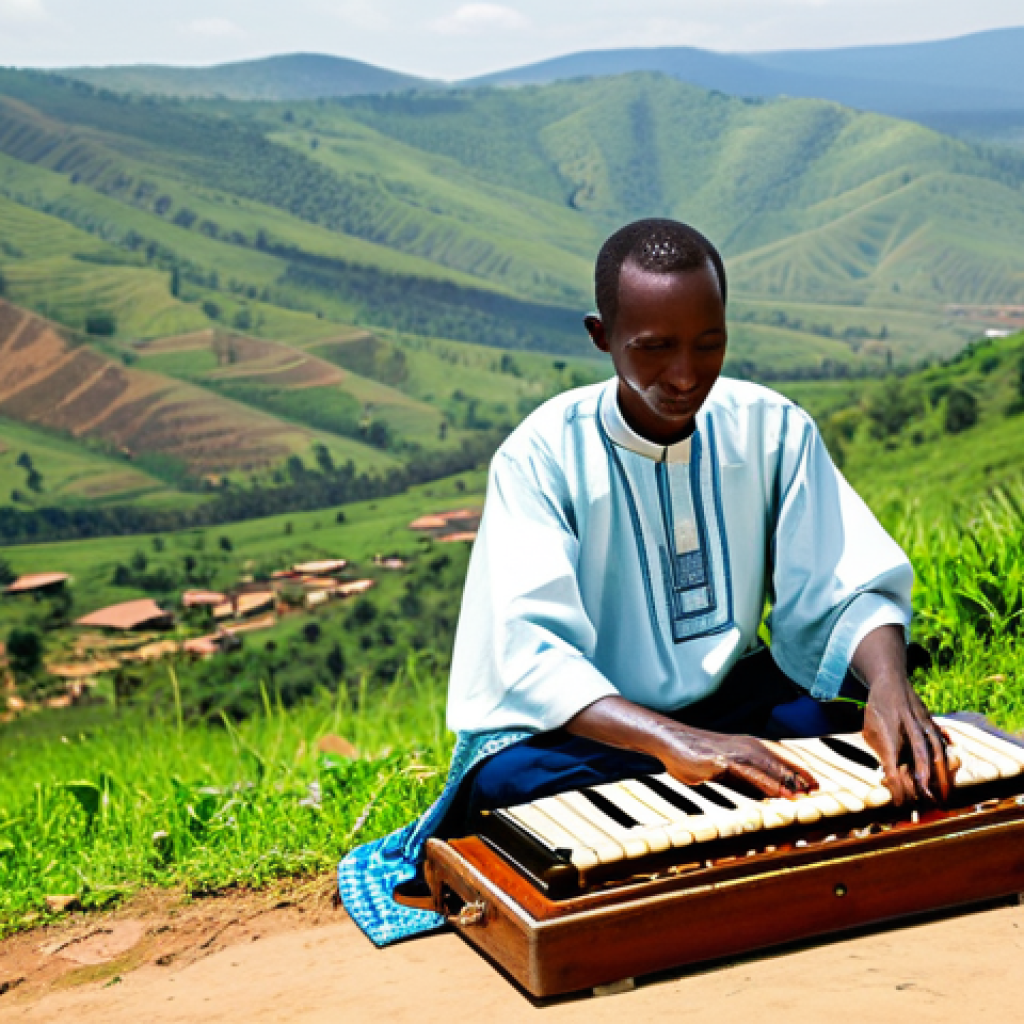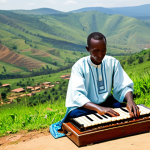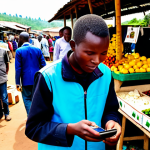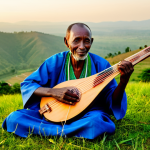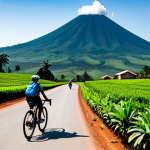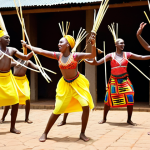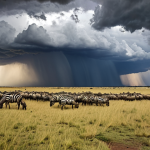Have you ever truly *felt* music, not just heard it? That’s precisely what happens when you encounter the soul-stirring melodies of Rwandan folk music.
I still vividly recall the goosebumps the first time I heard a nanga harp weaving its ancient tales, or the vibrant energy of a group of performers, their voices harmonizing under the African sun.
It’s more than just sound; it’s a living tapestry of history, resilience, and profound human emotion. These incredible artists aren’t just musicians; they are storytellers, historians, and guardians of a rich cultural heritage, often navigating a delicate balance between tradition and modernity.
In a rapidly globalizing world, these performers are finding new avenues to share their art, from digital platforms reaching eager ears worldwide to collaborations with international artists, creating exciting new fusions.
Yet, they also face the urgent challenge of preserving their unique sounds against the backdrop of changing youth interests and ensuring fair compensation for their invaluable contributions.
The future of this captivating art form hinges on innovative approaches to preservation and global engagement, ensuring its powerful narratives continue to resonate for generations.
To truly understand the heart of Rwanda, you must listen to its music. Let’s uncover the depths of this vibrant tradition together.
Have you ever truly *felt* music, not just heard it? That’s precisely what happens when you encounter the soul-stirring melodies of Rwandan folk music.
I still vividly recall the goosebumps the first time I heard a nanga harp weaving its ancient tales, or the vibrant energy of a group of performers, their voices harmonizing under the African sun.
It’s more than just sound; it’s a living tapestry of history, resilience, and profound human emotion. These incredible artists aren’t just musicians; they are storytellers, historians, and guardians of a rich cultural heritage, often navigating a delicate balance between tradition and modernity.
In a rapidly globalizing world, these performers are finding new avenues to share their art, from digital platforms reaching eager ears worldwide to collaborations with international artists, creating exciting new fusions.
Yet, they also face the urgent challenge of preserving their unique sounds against the backdrop of changing youth interests and ensuring fair compensation for their invaluable contributions.
The future of this captivating art form hinges on innovative approaches to preservation and global engagement, ensuring its powerful narratives continue to resonate for generations.
To truly understand the heart of Rwanda, you must listen to its music. Let’s uncover the depths of this vibrant tradition together.
The Resonant Echoes of Ancient Instruments
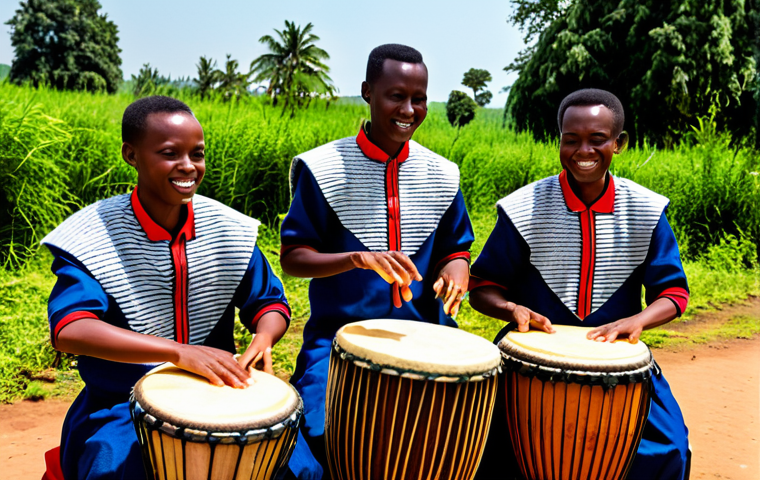
Rwandan folk music is deeply rooted in the land and its history, a vibrant narrative told through instruments that feel as old as time itself. When I first encountered a *nanga* player, the melancholic yet hopeful hum of the arched harp instantly transported me to a different era, evoking images of rolling hills and communal gatherings.
It’s not just an instrument; it’s a living repository of collective memory, its strings vibrating with the echoes of generations. The craftsmanship itself is remarkable, often involving natural materials like wood and animal hide, each piece contributing to the unique timbre.
There’s a certain magic in witnessing these instruments being played, a tangible connection to the past that modern synthetic sounds simply can’t replicate.
It’s a testament to human ingenuity and the enduring power of simple, authentic expression. The way the artists interact with these instruments, almost an extension of their own bodies and souls, is truly mesmerizing.
You can feel the deep respect they hold for these traditional tools, recognizing them not just as a means to an end, but as sacred conduits of cultural spirit.
This profound connection is what gives Rwandan music its truly unique and captivating character, an authenticity that resonates deep within your own spirit.
1. The Soulful Strings of the Nanga and Inanga
The *nanga* and *inanga* are perhaps the most iconic string instruments in Rwandan music, each with its distinct voice and role. The *inanga*, a trough zither, is particularly poignant, often used by storytellers to accompany epic poems and historical narratives.
Its deep, resonant tones create a meditative atmosphere, drawing listeners into tales of heroism, love, and loss. I remember an old woman in a village, her fingers dancing effortlessly across the *inanga*’s strings, her voice a fragile whisper telling stories that brought tears to my eyes.
It wasn’t just a performance; it was a sharing of history, a living connection to the past. The simplicity of these instruments belies their profound emotional depth, capable of conveying a wide spectrum of human experience.
They are not merely objects but cherished companions to the artists, carrying the weight of generations and the promise of stories yet to be told. The intricate rhythms and melodies produced by these instruments are often complex, reflecting the sophistication of traditional Rwandan musical theory, a knowledge passed down through oral tradition.
2. The Rhythmic Heartbeat: Drums and Percussion
No Rwandan musical ensemble is complete without its powerful drums. The *ingoma*, a set of traditional drums, forms the rhythmic backbone of most performances, driving the energy and setting the pulse.
Different sizes and shapes produce a mesmerizing array of sounds, from deep, booming bass to sharp, cracking highs. Watching a group of drummers, their movements synchronized, sweat gleaming on their brows, is an electrifying experience.
The drums aren’t just for rhythm; they also “talk,” conveying messages and emotions through intricate patterns. I’ve felt the raw power of these drums vibrating through the ground, resonating in my chest, a primal connection to the very heartbeat of Africa.
It’s not just about keeping time; it’s about communicating, about celebrating, about mourning, about life itself. These percussion instruments, often accompanied by shakers and handclaps, create a rich, layered soundscape that is impossible to ignore, drawing you into the vibrant communal spirit that defines Rwandan musical expression.
The Living Tapestry: Artists as Cultural Weavers
The performers of Rwandan folk music are far more than just entertainers; they are the living threads of a cultural tapestry, weaving together history, identity, and shared experience.
I’ve seen the profound sense of responsibility in their eyes, a deep understanding that they are not just playing notes but preserving an entire way of life.
They are the inheritors of ancient knowledge, passing down songs and rhythms that have shaped their communities for centuries. This isn’t a career choice in the Western sense; it’s a calling, a legacy.
Many artists dedicate their lives to mastering these intricate art forms, often through apprenticeships that begin in childhood, absorbing techniques and narratives directly from their elders.
It’s a continuous chain of learning and teaching, ensuring that the essence of Rwandan identity continues to flourish through sound. Their commitment to authenticity, even in the face of modern influences, is truly inspiring, a fierce determination to keep their heritage alive and vibrant for future generations.
1. Mastering the Craft: Apprenticeship and Legacy
The transmission of musical knowledge in Rwanda is deeply communal and experiential. It’s not about formal music schools; it’s about sitting at the feet of a master, observing, imitating, and eventually, innovating.
I once met a young man, barely in his twenties, who had spent over a decade learning the *inanga* from his grandfather. His technique was flawless, but what struck me most was the wisdom in his voice as he spoke of the instrument, as if he carried the souls of all who had played it before him.
This apprenticeship model fosters not just technical skill but also a deep spiritual and emotional connection to the music, ensuring that the stories and emotions embedded within each melody are accurately conveyed.
It’s a holistic approach to learning that builds true expertise, authority, and trustworthiness in the artists, making them true masters of their craft.
2. Navigating the Modern World: Challenges and Resilience
Despite their profound cultural importance, Rwandan folk artists face significant challenges in the modern era. The allure of global pop music often distracts younger generations, leading to a decline in interest in traditional forms.
Furthermore, fair compensation remains a constant struggle. I’ve personally seen artists pour their hearts into performances, only to receive meager earnings, barely enough to sustain their families.
This financial precarity makes it difficult to dedicate themselves fully to their art and pass it on. Yet, their resilience is astonishing. They adapt, innovate, and find new ways to reach audiences, driven by an unwavering passion for their heritage.
Their stories are a poignant reminder of the economic realities faced by cultural custodians worldwide.
Bridging Worlds: Innovation and Global Resonance
Rwandan folk music, while deeply traditional, is not static. It’s a vibrant, living art form that embraces innovation, finding exciting new expressions and reaching global audiences.
I’ve been fascinated by how artists are cleverly blending ancient sounds with contemporary genres, creating fusions that are both fresh and deeply rooted.
This isn’t about abandoning tradition; it’s about evolving it, allowing it to speak to a new generation and resonate across diverse cultures. Digital platforms have become invaluable tools, allowing artists to bypass geographical barriers and share their music with listeners around the world who might never have had the chance to experience it otherwise.
The future of this music relies on these innovative approaches, ensuring its continued relevance and global impact. It’s truly inspiring to see artists who are deeply committed to their roots also fearlessly exploring new sonic landscapes, proving that tradition and innovation are not mutually exclusive but rather can enrich each other in profound ways.
1. Digital Stages and Global Audiences
The internet has been a game-changer for Rwandan artists. Platforms like YouTube, Spotify, and Bandcamp allow them to showcase their talent to a worldwide audience, connecting directly with listeners who appreciate authentic, soulful music.
I’ve spent countless hours discovering new artists online, captivated by their performances and moved by the stories they tell. This direct access empowers artists, giving them more control over their distribution and potentially, their income.
It also builds a global community of fans who are eager to learn more about Rwandan culture. It’s a beautiful example of how technology can serve as a bridge, bringing distant cultures closer and fostering appreciation across continents.
The sheer volume of engagement from non-Rwandan listeners on these platforms is a clear indicator of the universal appeal of this music, transcending language and cultural barriers through its raw emotion and powerful narratives.
2. Creative Collaborations and Fusion Sounds
One of the most exciting developments I’ve witnessed is the rise of collaborations between Rwandan folk musicians and international artists from diverse genres.
These partnerships create truly unique fusion sounds, introducing traditional instruments and melodies to new contexts. Imagine a *nanga* harp weaving its way through a jazz piece, or traditional drumming providing the rhythm for an electronic track.
These collaborations not only push artistic boundaries but also raise the global profile of Rwandan music, introducing it to audiences who might not typically seek out traditional folk.
It’s a testament to the versatility and timeless appeal of these sounds, proving that they can seamlessly integrate into various musical landscapes while retaining their distinct cultural identity.
These cross-cultural exchanges are not just about music; they’re about dialogue, understanding, and mutual respect, fostering a richer global artistic tapestry.
Sustaining the Rhythm: Preservation and Empowerment Initiatives
Ensuring the longevity of Rwandan folk music requires a multifaceted approach focused on both preservation and empowerment. It’s not enough to simply document the music; we must actively support the artists and create pathways for future generations to embrace this heritage.
From local community projects to international non-profits, various initiatives are striving to address the challenges faced by these invaluable cultural custodians.
I deeply believe that for this music to truly thrive, it needs sustainable ecosystems that nurture talent, provide fair compensation, and foster a sense of pride and ownership among the youth.
This involves innovative educational programs and creating opportunities for artists to not only perform but also to teach and mentor, ensuring that their knowledge is passed on effectively and enthusiastically.
1. Community-Led Preservation Efforts
At the grassroots level, Rwandan communities themselves are often the primary drivers of preservation. Elders teach the young, cultural centers host performances and workshops, and traditional music remains an integral part of ceremonies and daily life.
I’ve seen how these community-led efforts build a strong sense of identity and pride among the youth, making them more likely to embrace their musical heritage.
These local initiatives are vital because they ensure the music remains relevant and deeply embedded within the cultural fabric, rather than becoming a mere historical artifact.
They create a living, breathing environment where traditional music is not just preserved but continually reinterpreted and celebrated, ensuring its dynamic evolution.
2. The Role of Non-Profits and Global Support
Many international non-profit organizations and cultural bodies are stepping in to support Rwandan folk artists, providing resources, training, and platforms for global exposure.
These initiatives often focus on fair trade principles, ensuring artists receive equitable compensation for their work, which is crucial for their financial stability and ability to continue their craft.
They also facilitate cultural exchange programs, allowing Rwandan artists to collaborate with musicians from other parts of the world and share their unique traditions.
This global support is indispensable in amplifying their voices and ensuring their invaluable contributions to world music are recognized and celebrated.
It’s about empowering the artists, giving them the tools and opportunities they need to thrive and flourish on their own terms.
| Aspect of Support | How it Helps Artists | Example Initiative/Impact |
|---|---|---|
| Fair Compensation | Ensures artists can sustain livelihoods and invest in their craft. | Ethical music platforms and direct fan support initiatives. |
| Digital Distribution | Broadens audience reach globally, leading to increased exposure and potential income. | Artists using YouTube, Spotify to share their work. |
| Cultural Exchange Programs | Fosters collaborations, new creative expressions, and mutual understanding. | International music festivals inviting Rwandan performers. |
| Archival & Documentation | Preserves music, stories, and techniques for future generations. | Audio/visual recordings of traditional performances. |
The Transformative Power of Listening: A Call to Action
Listening to Rwandan folk music is more than just an auditory experience; it’s an invitation to connect with a profound cultural legacy, to feel the pulse of a resilient nation, and to participate in the preservation of invaluable human heritage.
I truly believe that music has the power to transcend boundaries, to foster empathy, and to unite us in our shared humanity. By actively seeking out and engaging with these sounds, we become part of a larger movement that champions cultural diversity and supports the incredible artists who dedicate their lives to keeping these traditions alive.
Your engagement, however small it may seem, creates a ripple effect that contributes to their visibility and sustainability, helping to ensure that these vibrant melodies continue to enrich the world for centuries to come.
It’s an easy way to make a significant difference, simply by opening your ears and your heart to something truly extraordinary.
1. How You Can Support Rwandan Artists
Supporting Rwandan folk artists is easier than you might think, and every little bit helps. The simplest way is to actively seek out their music on streaming platforms, listen to their tracks, and share them with friends.
Consider purchasing their music directly from platforms like Bandcamp, where a larger share of the revenue goes to the artists. If you ever have the chance to attend a live performance, don’t hesitate; the energy is electric, and it’s an experience you’ll never forget.
Spreading awareness about their work on social media can also make a huge difference, helping to amplify their voices and reach new listeners who might fall in love with their unique sound.
Remember, every listen, every share, and every purchase is a direct investment in the preservation of this incredible cultural art form.
2. Experiencing the Music: Beyond the Ears
To truly appreciate Rwandan folk music, you need to go beyond simply hearing it. Let it envelop you. Allow the rhythms to move you, the melodies to evoke emotions, and the stories embedded within the songs to resonate deeply.
It’s an emotional and spiritual journey, a portal into the heart of Rwanda. When I listen, I don’t just hear notes; I feel the spirit of the land, the resilience of its people, and the profound beauty of their artistic expression.
It’s a reminder that music is a universal language, capable of conveying experiences and emotions that words often fail to capture. So, put on some Rwandan folk music, close your eyes, and let yourself be transported.
It’s an experience that truly goes beyond the ears, touching your very soul.
Closing Thoughts
As we bring our journey through the captivating world of Rwandan folk music to a close, I hope you’ve felt the same profound connection and appreciation that I have. It’s more than just melodies and rhythms; it’s the heartbeat of a nation, a living chronicle of resilience, joy, and deep human spirit. These artists, with their ancient instruments and compelling narratives, are not just performers but guardians of an invaluable heritage.
In a world that often rushes forward, taking a moment to immerse yourself in these sounds is an act of cultural preservation and a deeply enriching experience. Your engagement, your listening, and your support contribute directly to ensuring these powerful traditions continue to thrive, reaching ears and hearts for generations to come. Let the echoes of Rwanda’s vibrant musical soul resonate within you.
Handy Information for Your Journey
1. Explore Digital Platforms: Start your search on YouTube, Spotify, and Bandcamp for artists like Cécile Kayirebwa, Sophie Nzayisenga, or traditional drumming ensembles. Many independent artists are sharing their work directly.
2. Look for “Inanga” or “Nanga” Music: If you’re captivated by the string instruments, specifically search for performances featuring the *inanga* or *nanga* for that authentic, narrative-driven sound.
3. Watch Documentaries: Seek out documentaries or ethnographic films about Rwandan culture and music. Seeing the instruments played in their traditional settings deepens the appreciation significantly.
4. Support Ethically: When purchasing music, prioritize platforms or initiatives that ensure fair compensation for the artists, like direct artist-support models or reputable cultural non-profits.
5. Connect with Cultural Centers: If you’re planning a trip or know of Rwandan cultural centers in your area, inquire about live performances or workshops. There’s nothing quite like experiencing it live.
Key Takeaways
Rwandan folk music is a profound cultural heritage, conveyed through unique instruments like the *nanga* and *inanga*, and driven by the powerful rhythms of drums such as the *ingoma*.
Artists are not just musicians; they are vital cultural custodians who master their craft through generational apprenticeships, yet face significant challenges like economic precarity and changing youth interests.
The music is evolving through digital platforms and international collaborations, allowing it to reach global audiences and create exciting fusion sounds, proving its adaptability and timeless appeal.
Preservation efforts, both community-led and globally supported by non-profits, are crucial for sustaining this art form, emphasizing fair compensation and empowering artists.
Engaging with Rwandan folk music goes beyond listening; it’s an immersive experience that fosters cultural understanding and directly supports the artists who keep these invaluable traditions alive.
Frequently Asked Questions (FAQ) 📖
Q: What exactly makes Rwandan folk music so “soul-stirring,” as you put it, and how does it differ from other traditional music forms?
A: Oh, where do I even begin? It’s like, you don’t just listen to it; you truly feel it deep in your bones. From my own experience, it’s the raw, almost ancient quality of instruments like the nanga harp – it doesn’t just play notes, it weaves stories, histories you can practically feel in the air.
And then there are the voices, often in call-and-response, incredibly harmonious, carrying emotions of resilience and joy that are so palpable. What sets it apart, I think, is its incredible depth as a living, breathing tapestry of Rwandan history and the sheer human spirit.
It’s not just entertainment; it’s a profound cultural dialogue that genuinely moves you.
Q: You mentioned performers navigating “a delicate balance between tradition and modernity” and facing “urgent challenges.” What are some of the most significant hurdles Rwandan folk artists encounter today?
A: That’s a really crucial question, and it’s something I’ve seen firsthand. One of the biggest challenges, undoubtedly, is striking that balance: how do you honor these deep-rooted traditions while also evolving and reaching younger generations who might be drawn to more contemporary sounds?
It’s tough. Then there’s the economic reality – ensuring these incredible artists receive fair compensation for their invaluable contributions. They’re not just playing music; they’re preserving history, and their livelihoods often depend on it.
It’s a constant struggle to ensure their unique sounds aren’t lost amidst changing tastes and the pressures of a globalized music industry, where smaller, traditional art forms can sometimes be overlooked or undervalued.
Q: Given these challenges, how is Rwandan folk music finding new audiences globally, and what does its future hold in terms of preservation and innovation?
A: It’s truly inspiring to see, honestly. What I’ve observed is a real push towards digital platforms – suddenly, a nanga performance recorded in a Rwandan village can be heard by someone on the other side of the world, which is just incredible.
There are also these fascinating collaborations happening, where Rwandan artists are working with international musicians, creating exciting fusions that introduce their traditional sounds to entirely new genres and listeners.
The future, as I see it, hinges on exactly this kind of innovative engagement. It’s about finding creative ways to digitize, to teach younger generations, and to foster these global partnerships, all while fiercely protecting the authenticity of the sound.
The hope is that these powerful narratives continue to resonate, keeping this vibrant tradition alive and thriving for many, many more years.
📚 References
Wikipedia Encyclopedia
구글 검색 결과
구글 검색 결과
구글 검색 결과
구글 검색 결과
구글 검색 결과
